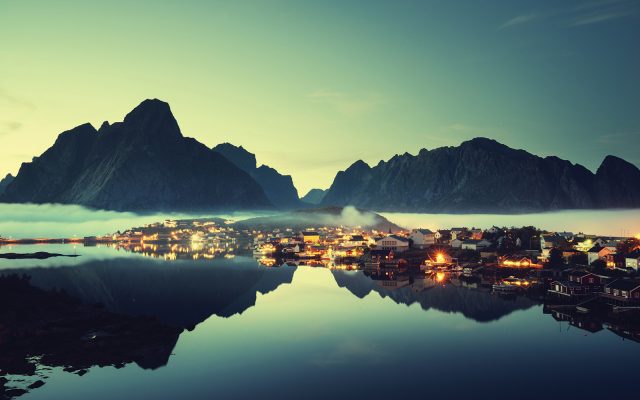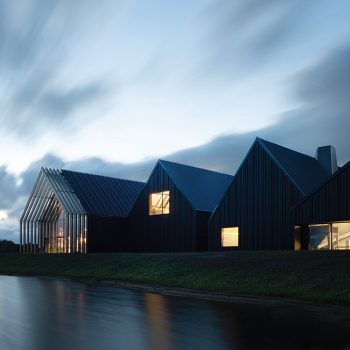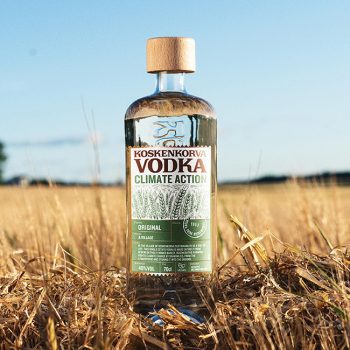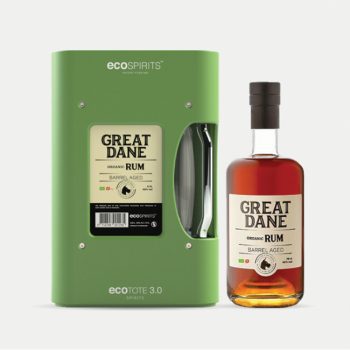What’s new in the Nordics?
While volume sales across the Nordics might not ‘wow’ you, the region’s distillation scene, forward-thinking on-trade, and discerning consumer audience are creating an international buzz.

*This feature was originally published in the October 2023 issue of The Spirits Business magazine.
With its vibrant craft distilling scene and long history of spirits production, combined with factors including state monopolies and restrictive laws regarding the promotion of alcohol, the spirits category in the Nordics is complex, to put it mildly.
On paper, things aren’t exactly booming. Only Denmark, according to IWSR Drinks Market Analysis, showed any growth in total spirits volumes between 2021 and 2022, a modest 3% increase, contrasting with the overall Nordic region’s 2% decline over the same period. Sweden remained constant, while Finland, Iceland and Norway all declined, by as much as 9% in Norway’s case.
But there’s more to the category than volume sales. Each country is home to thriving distilling scenes, producing traditional local spirits as well as local takes on categories such as gin and whisky. Sustainability is a major consideration for producers, and non-alcoholic spirits are on the rise too.
“The key trends shaping the spirits industry in the Nordics are health, sustainability and premiumisation,” says Suvi Reinikkala, spirits marketing director for leading Nordic spirits producer Anora. “Many people want to enjoy spirits without compromising their wellbeing.”
Euromonitor International consultant Salla Korpivaara notes this too: “Non-alcoholic spirits represented the fastest-growing subcategory within spirits in all Nordic markets in 2022, albeit from a very small base, driven by the health and wellness trend.”
When it comes to premiumisation, Aruna Braganza, market analyst for IWSR Drinks Market Analysis, says that although this is ahead of 2019 levels, “there has been a noticeable deceleration”.
As for those declining volumes, Korpivaara points out that this continues a long-term trend, driven by multiple factors. “Consumers, particularly the younger generation, are drinking less,” she says, adding that, post-Covid, people are drinking less at home, contributing to a volume drop.
Denmark, with growing sales of spirits, is the exception. “Increasing interest in premium, craft, non-alcoholic and cocktails kept volume growth positive in 2022,” says Korpivaara.

Jeppe Rasch Christensen, partner and CCO of Danish distributor Local Spirits, has seen this increase in craft spirits over the past five to 10 years. “The market today is much more diversified – it’s more or less the same development that happened within the beer industry, just 10 years later.”
“In Denmark, distilling was controlled by the government for most of the 1900s,” says Hans Martin Hansgaard, co-founder of Danish whisky producer Stauning. “It’s now liberated, and independent distilling is on the rise.”
Keeping it local
The region’s traditional spirit, akvavit, is benefiting, says Lars Williams, co-founder of Copenhagen’s Empirical Spirits. “It never goes out of style, but there’s been an exciting wave of local distilleries bringing modernity to the classic,” he says. “This is also the case with categories such as whiskey and gin. These aren’t Scandinavian by definition, but Denmark is bringing its own signature to them.”
At Copenhagen cocktail bar Ruby, there’s growing demand for local products, and for gin in general, says general manager Michael Hajiyianni. “Gin cocktails are our most popular, and we sell a lot of gin and tonics,” he says.
Gin’s popularity extends throughout the Nordic region, benefitting from elevated serves in balloon glasses with premium tonics, says Barney Blichfeldt, founding partner of Oslo-based beverage consultancy Spirited Animals. “The trend is so pervasive that even dive bars frequently offer it,” he says.
In Finland, Kyrö Distillery Company co-founder and UK and Asia lead Miika Lipiäinen believes that there has been some polarisation in spirits in recent years. “Some of the consumption trends are towards light-hearted and social occasions, while more connoisseurial and expert consumption culture is also doing well,” he says.
At-home drinking trends born out of the pandemic have persisted in Iceland, says Halli Thorkelsson, founder and CEO of Eimverk Distillery. “The home bar is back, growing in particular during Covid but is still here, and people are becoming more comfortable and knowledgeable about spirits and cocktails.”
There’s demand for quality spirits within Iceland’s on-trade too, he notes. “We used to have to sell Flóki whisky to bars three years ago, but this has changed to strong demand, where bars and restaurants seek us out, place good orders, and repeat orders come fast.”
This demand for local spirits is true across the Nordic region, for traditional spirits as well as locally produced gin, whisky and more. “In the Nordics, there are strong traditions and a preference towards local brands, and spirits are no exception,” says Korpivaara.

“Typically in the Nordics there is a good balance between locally produced and imported brands,” adds Reinikkala, highlighting Anora’s success with brands like Koskenkorva Vodka, as well as its aquavit portfolio. The latter benefits, she says, not only from its long heritage and traditional usage occasions, but also growing on-trade demand for use in cocktails.
This favours local gins too, says Braganza. “They are benefitting from the rise in cocktail trends, capitalising on unique flavours and locally sourced herbs used in their products.”
Christensen is seeing growing appreciation for local spirits in Denmark. “Until recently, in a small market like ours it wouldn’t have been possible to have a distributor like Local Spirits, dedicated to local products, but today even the more established wholesalers are forced by demand to have more local products in their portfolios.”
At Ruby, Hajiyianni is seeing this too. “Consumers are asking for locally produced spirits a lot more,” he says. The bar’s founders have set up their own distillery, Mælkevejen, launching an aquavit and intending to produce other spirits too.
“Consumers in Denmark have great respect for locally sourced and produced products,” says Stauning’s Hansgaard. Rye whisky makes particular sense to produce locally, he says. “We grow high quality-rye in Scandinavia and we have a close relationship with rye historically.”
Leading the charge
Like Stauning, Finland’s Kyrö is a proponent of rye whisky. “Right now the Nordics are leading the charge in the rise of world whisky, and rye in particular,” says Lipiäinen. But there are challenges. “Interest towards local spirits is strong, but general awareness has not yet developed enough to challenge the prevalence of international brands. Alcohol marketing regulation in Finland, and most Nordic countries, does not allow us to tell the public about our products at scale.”
In Sweden, too, there’s strong demand for local spirits according to Oskar Kalmaru, CEO of the country’s Agitator Whisky. “Swedes like to drink Swedish spirits, and are quite happy to try new products,” he says, adding that rum is the one to watch. “Rumour has it that more local producers are taking up rum – it may be the next trend for locally produced spirits in Sweden.”
It’s all about gin and aquavit in Norway, says head of R&D for Oslo bar Himkok, Paul Aguilar Voza. “The spirits scene has been marked by a renaissance of the traditional spirit aquavit,” he says. “Nordic gin, infused with unique regional botanicals, is on the rise and, while whisky isn’t a traditional Nordic spirit, local production has been budding.”
Voza believes that the strength of locally produced spirits stems from a number of factors, including local pride and sustainability considerations. “While international staples such as whisky and rum have retained their allure, there has been a palpable shift towards local alternatives, with even Nordic whiskies carving their own niche,” he says.
As with aquavit elsewhere, Eimverk’s Thorkelsson is seeing growing demand for Iceland’s native spirit, brennivín, with a steady increase in sales of his Víti brand. “It’s still a challenge, and the aquavit category in general has struggled to find premium prices, but locals are surprised by its quality, and word of mouth is increasing the trend.”
On-trade influence
With off-trade sales of alcohol restricted to monopolies in a number of Nordic countries, not to mention restrictions on advertising and marketing in the region, the on-trade plays an important role. “While on-trade sales represent a relatively modest portion of the total volume sales compared to monopoly sales, the majority of the market’s off-trade demand for new products is driven by trends within the on-trade,” explains Braganza.
“The on-trade sector has a pronounced influence in setting spirits trends, especially in markets like Norway and Sweden,” confirms Blichfeldt. “As ‘dark markets’, where advertising of alcoholic beverages is prohibited, it’s in the on-trade that trends are being built.”
Anora’s Reinikkala agrees. “The on-trade is extremely significant in the Nordics due to the restricted opportunities to communicate with consumers,” she says. “We introduce several innovations and novelties in the Nordic alcohol monopolies, but the on-trade has a significant role in building trends.”
This is helped by the thriving cocktail scene across the region, particularly in countries such as Denmark, says Williams. “Bartenders are definitely the trend setters,” he says.
The influence of Sweden’s monopoly, Systembolaget, isn’t to be underestimated, however, says Kalmaru. “The off-trade is traditionally very influential – the government monopoly is the only off-trade channel, and they can create trends at their own discretion.”
In Norway, says Voza, it’s a combination of the two. “While bars and restaurants are instrumental in introducing consumers to new flavours and trends, the off-trade sector, especially the state-run Vinmonopolet, holds significant influence.”
It’s challenges like these, with off-trade monopolies and marketing restrictions, combined with vibrant local distilling and cocktail scenes, that make this such a dynamic region for spirits, and one that will no doubt continue to evolve.
Sustainability
Echoing broader trends in the Nordics, sustainability has been a growing priority for the region’s spirits producers, retailers and consumers.

“In light of the Nordics’ steadfast commitment to sustainability, ecoSPIRITS is emerging as a game-changer,” says Barney Blichfeldt of Norwegian beverage consultancy Spirited Animals, which has teamed up with the sustainable spirits packaging company.
In Denmark, Jeppe Rasch Christensen of distributor Local Spirits agrees. “Sustainable delivery formats such as bulk delivery, and most recently ecoSPIRITS, have become increasingly important to customers who are trying to minimise their footprint,” he says. More broadly, he cites examples of those leading the charge when it comes to local production, as well as organic products, such as Copenhagen restaurant Noma, Roskilde Festival and five-star Hotel Villa Copenhagen.
“We’ve noticed a growing interest in more local, sustainable or organic products,” confirms Lars Williams of Denmark’s Empirical Spirits.
Anora’s Suvi Reinikkala is seeing interest in products that use regenerative farming methods, through Koskenkorva’s Vodka Climate Action expression, produced from regeneratively-farmed barley. “The sustainability trend has gained significant traction and is shaping the way spirits are produced and consumed,” she says.
Related news
Butterfly effect becomes catalyst for Silver Lyan menu
